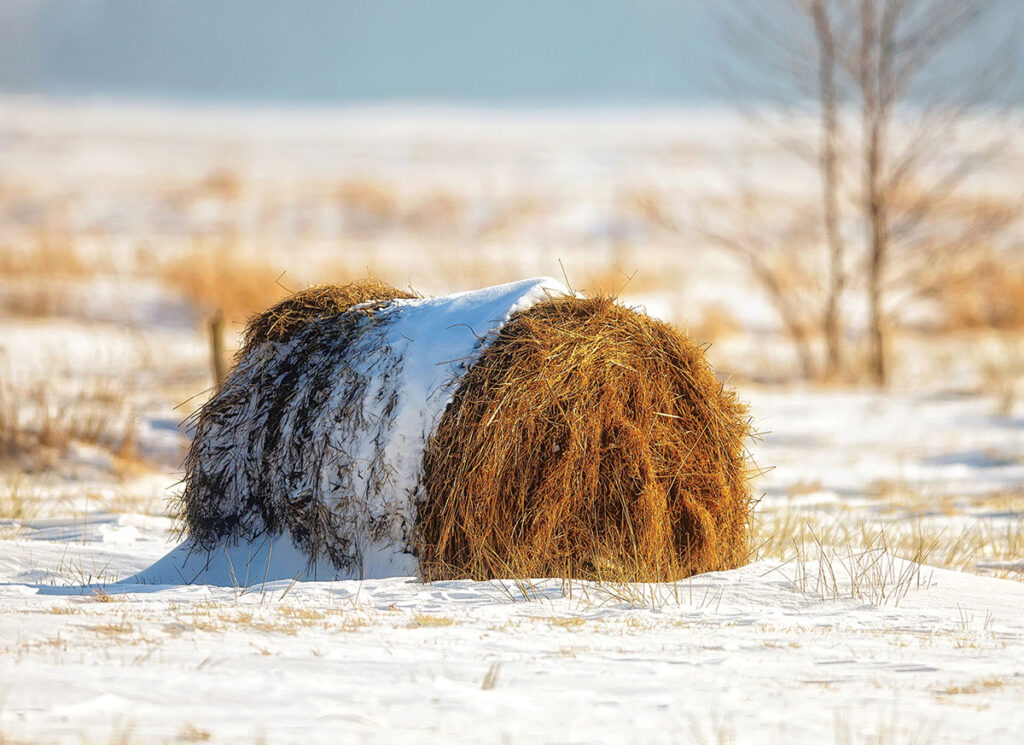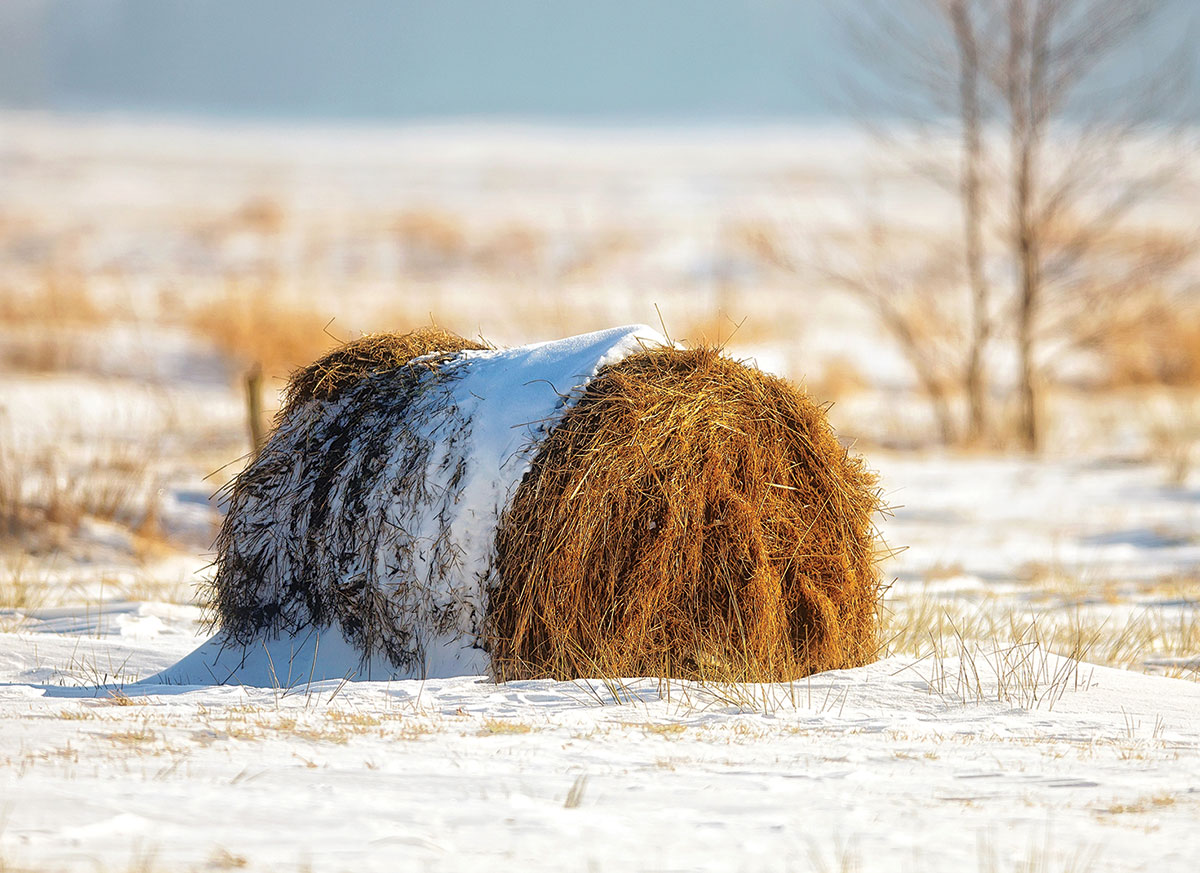
Strategies for getting the most out of each bale of hay this winter
Now more than ever producers are tasked with stretching their resources as much possible. As the winter months approach, there are some strategies to keep in mind when buying and feeding hay. The management practices can help producers ensure they are utilizing their hay in an efficient and cost-effective manner.
Initial Considerations: Prior to feeding hay, producers may want to take the time to evaluate their herd and cull their under performing cattle. Now is the time to analyze cows that are failing to perform to the standards of the operation and decide whether they should continue to be in the herd or not.
Additionally, check out what feed alternatives are available. Determine if hay is the cheapest source of feed for the operation. Additional feed options could include grain and grain by-products.
Buying Hay: When buying hay find out the origins of the hay to prevent bringing any noxious weeds to the farm. If purchasing hay at an auction, buy it by weight not per bale. “Be a prudent shopper for hay,” Charles Ellis, University of Missouri Extension Field Specialist in Agricultural Systems Technology, advised. “When we buy corn and soybeans, we buy a product by known volume. And then when we buy hay, we buy it by the bale. I encourage you to buy it by the ton and get a forage sample done on the hay to know what you are buying.”
When producers know the nutrient value of the hay, then they can build a ration to meet the cow herd’s requirements. Additionally, understanding the nutritional value of each bale allows producers to allocate the hay to where it best fits the needs of their cow herd. Depending on their stage of production some animals will need a higher quality forage than others. Feed the better hay to the cows that have higher nutritional needs.
Storing Hay: One of the best ways to minimize hay waste is to properly manage how it is stored. If possi-ble, store the hay inside. If the hay must be stored outside, elevate the bales off the ground. Palates, tires and rock are all options to create space from the bottom of the bale and the wet ground. “Getting it off the soil will minimize spoilage from coming from the wicking of the moisture from the soil,” Ellis said. “There is just as much spoilage that occurs from the wicking of the moisture from the soil as there is from rainfall hitting the top of the hay bales.”
Feeding Hay: If the operation utilizes a combination of hay being stored inside and outside, feed the outside hay first. The hay baled first in the season, should also be fed first. “If you have hay bales of different sizes, geometry tells us you are going to have a higher percentage of spoilage in the smaller bales just because of the diameter of them, so feed them first,” Ellis added.
Another way to minimize hay waste is to only put out the amount of hay the cattle will eat in a day. “That can be a challenge depending on bale size, herd size, or if producers have off the farm jobs. But if you limit feed to what the cattle can eat in a day, then they are not just standing there munching on excess,” Ellis stated.
Producers may also want to limit the amount of time cattle have access to hay. Putting the hay out and then pulling the cattle off after eight to 10 hours helps to reduce waste as well. Installing an electric fence to move cattle in and out of the hay feeding areas is an option for some operations.
Bale Feeders: There are a variety of hay bale feeders, racks or rings on the market. Depending on the size and design, utilizing the hay bale feeders can help producers save on hay waste. However, some designs require additional equipment to get the bale into the hay feeder. Producers need to consider the cost of the hay feeders and the potential investment in additional equipment that may be needed to use them.




